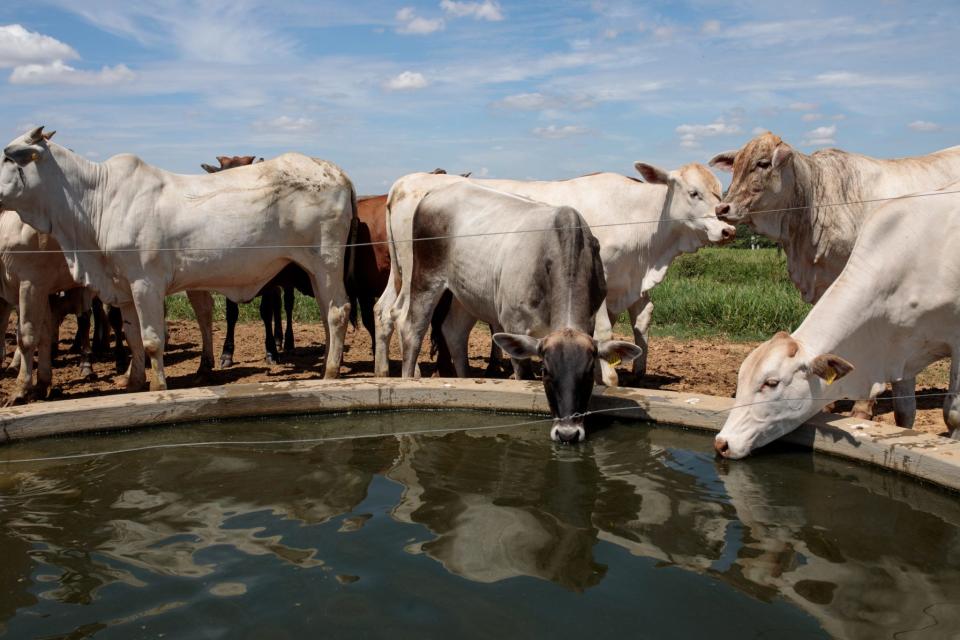The Texas ranchers whose cattle survived the biggest wildfire in history now have cows sick with bird flu

A mysterious virus has been infecting cattle herds across the central and southern U.S. for the past few weeks. For Texas ranchers recovering from recent wildfires that burned more than 1 million acres, it’s poor timing.
The Texas Department of Agriculture started getting widespread reports of an unidentified disease affecting around 40% of cattle herds in the state’s panhandle a little less than a month ago, Texas Agriculture Commissioner Sid Miller tells Fortune.
“We tested for everything—every disease known to infect cows,” Miller says. “They all came back negative.” But after weeks of uncertainty, U.S. Department of Agriculture testing revealed on March 25 that the disease was highly pathogenic avian influenza (HPAI), a form of bird flu that had never been detected in cattle before.
HPAI is a much more common issue for poultry flocks, and the virus is so dangerous that infected birds have to be killed to stop it spreading. Between 2022 and 2023, almost 60 million chickens and turkeys were killed on American farms for HPAI prevention purposes. Authorities haven’t been requiring cattle ranchers to kill infected animals: Miller said that the cattle are “end hosts” and there’s no evidence that they can transmit the virus. The disease has also spread to other species in the past, including seals and sea lions, but infections in humans are exceedingly rare.
What the disease outbreak means for the milk supply
Infected cows generally exhibit flu-like symptoms and produce less milk, Miller says, which raised some concerns that if the disease becomes widespread, there could be a milk shortage—but Miller dismissed those worries.
“Customers need not worry: There’s not going to be a milk shortage,” Miller says. “The price of milk should remain stable.”
Knowing that milk came from an infected cow could feel unsettling to some, but consumers don’t need to worry about getting sick, experts say.
“Milk from [infected] cows is very identifiable, so it never made it into the food system—and even if it did, any pathogens would be removed by pasteurization,” Miller said. “I’m not trying to paint a rosy picture, but it’s really not that bad… There’s not going to be a huge economic impact.”
Authorities believe that cows likely contracted the virus by drinking from water sources where infected migratory birds had recently been swimming. If that’s the case, time is on the ranchers' side. Most of the potentially infectious migratory birds have already passed through the state, Miller said.
“Cowboy logic tells me that the migratory season is almost over, and almost all the waterfowl have gone north, so we’re probably at the tail end of this,” Miller said.
This story was originally featured on Fortune.com
